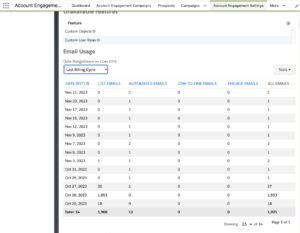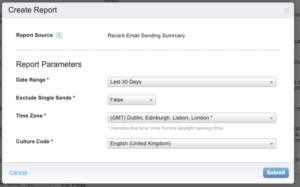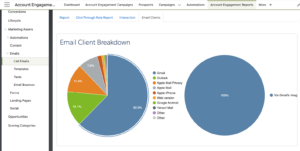Google & Yahoo are releasing changes for email senders to reduce spam emails for their users. However, this could mean that your domain could be flagged as spam if you do not prepare. If you are a Marketing Cloud user (Account Engagement or Engagement) and you are concerned about how this might affect you, you’re not alone! This blog aims to answer all of your questions.
Why is the change happening?
As with all changes for email marketers over the past few years, it’s about security. The changes are coming in to protect recipients from spoofing and phishing messages, and from being spammed. One of Salesforce’s values is trust, which means that this won’t actually have such a huge impact on users as it could be if you were using alternative providers with lower security and personalisation features on the platform.
Who is the change happening for?
Organisations sending over 5,000 emails a day will be marked as “bulk senders” and will require extra authentication. Specifically:
- Senders that send over 5,000 emails per day to Gmail users
- Gmail account holders, including work or school accounts from a Google Workspace.
What is the change?
Google states that:
Starting February 1, 2024, senders who send more than 5,000 messages per day to Gmail accounts must meet the requirements in this section.
- Set up SPF and DKIM email authentication for your domain.
- Ensure that sending domains or IPs have valid forward and reverse DNS records, also referred to as PTR records. Learn more
- Keep spam rates reported in Postmaster Tools below 0.3%. Learn more
- Format messages according to the Internet Message Format standard (RFC 5322).
- Don’t impersonate Gmail From: headers. Gmail will begin using a DMARC quarantine enforcement policy, and impersonating Gmail From: headers might impact your email delivery.
- If you regularly forward email, including using mailing lists or inbound gateways, add ARC headers to outgoing email. ARC headers indicate the message was forwarded and identify you as the forwarder. Mailing list senders should also add a List-id: header, which specifies the mailing list, to outgoing messages.
- Set up DMARC email authentication for your sending domain. Your DMARC enforcement policy can be set to none. Learn more
- For direct mail, the domain in the sender’s From: header must be aligned with either the SPF domain or the DKIM domain. This is required to pass DMARC alignment.
- Marketing messages and subscribed messages must support one-click unsubscribe, and include a clearly visible unsubscribe link in the message body. Learn more
Read the full Help Page here.
How do I prepare for this?
Luckily, for Account Engagement & Engagement users, it shouldn’t be a radical change:
Email Authentication
Account Engagement and Engagement require all Email Sending Domains to be authenticated, using SPF and DKIM. You cannot send emails from either platform unless your domain ownership is verified. Sometimes, we see that an email-sending domain is not DKIM verified even though it is used for email sending. Follow these steps to set up DKIM.

Salesforce strongly recommends configuring DMARC, an email authentication protocol which stands for “Domain-based Message Authentication, Reporting & Conformance”. A DMARC test checks for alignment between:
1. * the “from” domain and the DKIM signing domain
OR
2. * the return-path domain and the mail-from address
Account Engagement will pass DMARC tests as DKIM is required to set up your email-sending domain (1). However, it will fail the SPF check (2) due to the return-path for Account Engagement emails being example@exacttarget.com. If your company requires alignment of the return-path address to the mail-from domain you can log a support case. Account Engagement will supply the DNS records to add to your domain to configure on your DNS. More information on this here.
One-Click Unsubscribe
Account Engagement includes the List-Unsubscribe Header in all emails and it cannot be edited by Users, reference here. Engagement also uses the List-Unsubscribe Header in emails, reference here. This satisfies Google’s requirement for the one-click unsubscribe.
Separate from the List-Unsubscribe Header requirements, a challenge that email marketers often see is a higher unsubscribe rate for businesses they are emailing that have very strict email security servers, we see these bots ‘clicking’ each link in an email to ensure that it is safe, and in doing so, the bot can opt-out the recipient. Account Engagement has a feature called two-click unsubscribe, when enabled this allows the recipient to click the unsubscribe link and then select a button on the page to confirm the opt-out. This is disabled by default. Engagement has many unsubscribe methods available, specifically for one-click unsubscribe as the default.
 Zoe Fisher Principal Marketing Automation Consultant
Zoe Fisher Principal Marketing Automation Consultant
Looking for help with Account Engagement?

Looking for help with Account Engagement?
Wanted Emails
As email marketers, we all know that blanket emails are not a good example of marketing or communicating with desirable recipients. So how can we make sure that recipients really want our emails?
It’s simple – data. Marketers need to act more like Data Analysts these days. Do you have the following:
Easy opt-in and opt-out
Ensure your recipients know they are opted into receiving your communications and allow them to opt-out as easily as possible. As Google states, being able to unsubscribe in one-click is one of the key indicators that your domain is not spam.
You can set up a confirmed opt-in process following the guidance here for Account Engagement or here for Engagement.
Provide options on what recipients receive
Account Engagement and Engagement both have preference/subscription centre capabilities. Use this, or a custom email preferences page to allow recipients to choose what they want to receive from you, and even better if they can select how often.
Emails are relevant
Based on the data we hold, we can determine if a recipient is interested in one thing or another. So, prioritize meeting their needs first and avoid emailing them about something unrelated in an attempt to meet your objectives. Providing options to recipients also helps with this.
Using a Customer Data Platform (CDP) such as Data Cloud can increase the level of sophistication around segmenting data and personalising your campaigns to ensure that all emails are relevant to each individual recipient.
Emails are timely
The real power of marketing automation comes when you allow it to do the hard work for you. If you host or sponsor an event, ensure you have the right integrations and processes in place to follow up promptly, rather than a week later. Use features such as Einstein Send Time Optimization to ensure your email lands in a recipient’s inbox at the most suitable time for them.
Assess the risk
There are a few ways you can assess how much these changes will impact your business:
- Assess how many individual emails are being received every day.
- Account Engagement: Monitor Frequency Lists and check the Email Usage table in Account Engagement Settings > Account > Usage and Limits at the bottom of the page

- Engagement: Use the Recent Email Send Summary Report in Analytics Builder to review how many emails were sent over a custom timeframe

- Account Engagement: Monitor Frequency Lists and check the Email Usage table in Account Engagement Settings > Account > Usage and Limits at the bottom of the page
- See what email client recipients are using
-
- Account Engagement: on a sent list email, view the report and select Email Clients to see what clients your recipients are using

-
In summary, if you are an Account Engagement or Engagement customer, you’re covered in all of the technical aspects for the update coming on 1st February 2024. However, you need to ensure that your email strategy caters to the needs of your audience.
Do you want to be a trusted source for your recipients, boost engagement and remain compliant? Get in touch.
18/01/2024: This blog was updated in line with Salesforce’s guidance to configure DMARC for Account Engagement.


